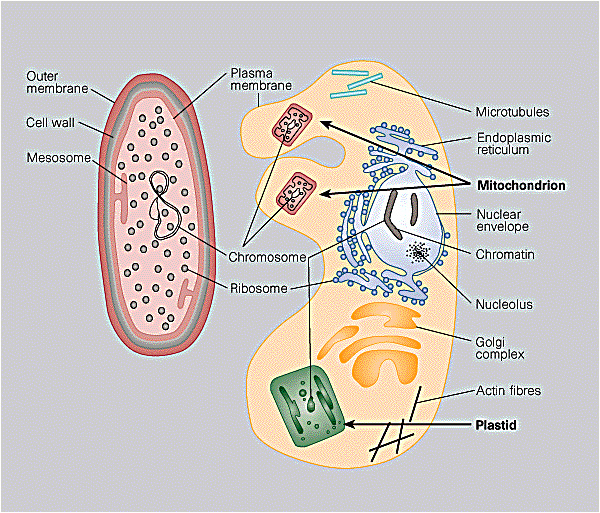Typical prokaryotic (left) and eukaryotic (right) cells
Keywords
Flag Inappropriate
Delete Content

Typical prokaryotic (left) and eukaryotic (right) cells
In prokaryotes, the DNA (chromosome) is in contact with the cellular cytoplasm and is not in a housed membrane-bound nucleus. In eukaryotes, however, the DNA takes the form of compact chromosomes separated from the rest of the cell by a nuclear membrane (also called a nuclear envelope). Eukaryotic cells also contain a variety of structures and organelles not present in prokaryotic cells. Throughout the course of evolution, organelles such as mitochondria and chloroplasts (a form of plastid) may have arisen from engulfed prokaryotes.
This image is linked to the following Scitable pages:
Eukaryotic cells are more complex than prokaryotic ones because of specialized organelles. Learn how ancient collaborations between cells gave eukaryotes an important energy boost.





















Comments
CloseComments
Please Post Your Comment